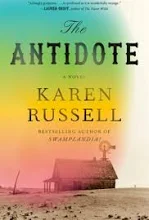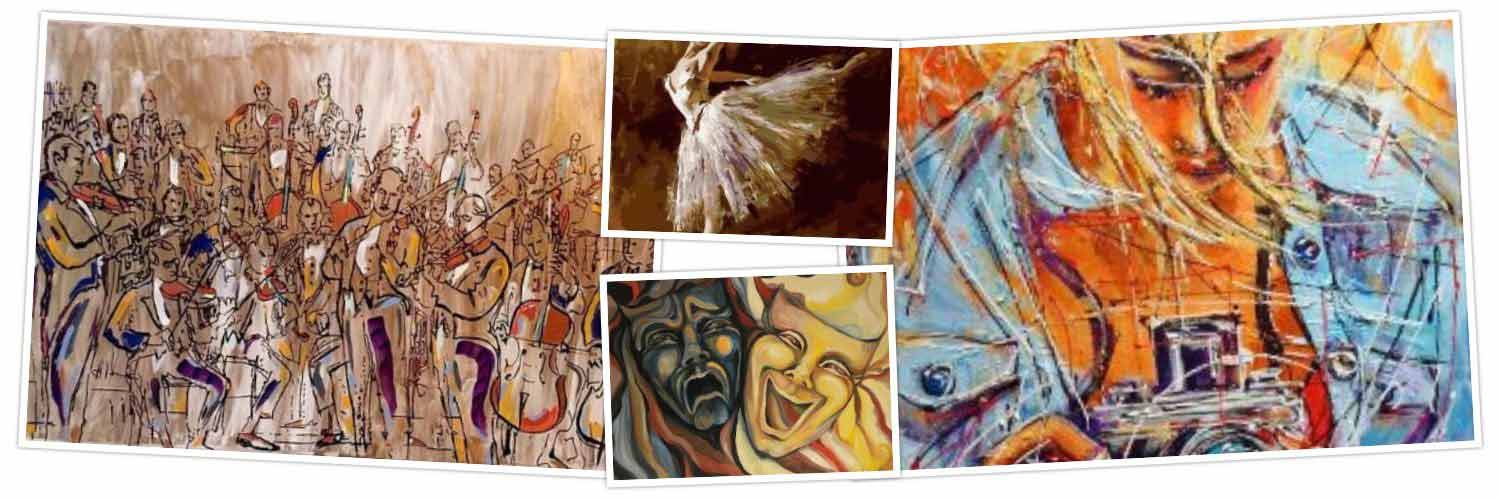“The Antidote,” a novel by Karen Russell
Reviewed by Steven G. Kellman
Karen Russell’s debut novel, Swamplandia!, the exuberant account of an alligator-wrestling theme park in southwest Florida, appeared 14 years ago. Her second novel, published now, is also imbued with a vivid sense of place, except that, instead of the author’s native Sunshine State, the setting for The Antidote is 1935 Uz, Nebraska – during the arid, windy, sandy depths of the Dust Bowl. The region is ravaged by soil erosion, sandstorms, and a serial killer. In the nightmarish opening chapter, farmers cudgel to death the hundreds of ravenous rabbits that have overrun their lands.

The novel takes its title from a term commonly applied to Antonia Teresa Rossi, the offspring of Sicilian immigrants who provides an antidote to memories that burden the people of Uz. Also called “Prairie Witch” and “Vault,” she possesses the uncanny ability, while in a trance, to accept and store mnemonic deposits. She makes a living serving as a kind of psychotherapist or priest confessor to the community. People pay her to assist in catharsis, the transfer of their most troubling thoughts from them to her. Later, when they feel more comfortable about it, they can ask her to retrieve their deposits.
Vault is one of several alternating narrators in chapters throughout the novel. Another is 15-year-old Asphodel “Dell” Oletsky, a star basketball player who comes to work for the prairie witch in order to finance her team’s travel expenses. After her mother is murdered, Dell is adopted by her Uncle Harp, another of the novel’s principal narrators. Spared the devastation suffered by all his farming neighbors, Harp miraculously finds himself harvesting a bumper crop of wheat. The scarecrow in his field is also a narrator, as is Cleo Allfrey, an African American photographer assigned by the New Deal’s Resettlement Administration Historical Section to document conditions in the Midwest. Archival photographs are scattered throughout the volume.
The Resettlement Administration, created by Franklin D. Roosevelt to relocate people from agriculturally exhausted land, was directed by Roy Stryker, an actual historical figure who, like Dorothea Lange, the legendary photojournalist, and Zintkála Nuni, a Lakota survivor of the Wounded Knee Massacre, shows up in the novel. Stryker instructs his photographers to go out into the field and bring back only authentic images. “Reality doesn’t need any embellishments,” he insists to Cleo. But something odd happens while she develops negatives. “This camera sees things that aren’t here yet,” she explains.
Russell, who will be a featured author at this year’s San Antonio Book Festival on April 12, revels in embellishments. Her lavish doses of magical realism create a tension with the bleak and barren Nebraska setting. “Uz was an ugly and uninviting place,” says Cleo. The prairie witch’s supernatural powers counter the starkness of Dell’s prairie home with a kind of polychromatic Oz. Cleo’s creative camera and the bounteous yield of wheat that leads Harp Oletsky to marvel: “I’d been enclosed in some kind of bubble, set apart from the dust and everyone who suffers” would strike Stryker as literary extravagance. Fans of Gabriel García Márquez, however, might savor Russell’s fertile imagination.
The Antidote is a hefty book, filled with print and pictures and capacious enough to stock several leaner novels. Included within its pages are the stories of 19th-century Polish immigrants on the Great Plains frontier; a pregnant young woman confined to a home for unwed mothers; the dispossession of the Pawnee, Lakota, and other indigenous peoples; a plucky women’s basketball team renamed The Dangers after hard times force Uz Poultry and Eggs into withdrawing its sponsorship; and the savagely competitive campaign for sheriff of Uz. The through line is the mystery of the Lucky Rabbit’s Foot Killer – someone has been murdering local women, including Dell’s mother, and leaving a rabbit’s foot beside their corpses.
Our memories are born as mutable stories, like the ones that Vault/The Prairie Witch receives and returns. However, when her memory fails her, she improvises. So, too, do we all, suggests Russell, in fashioning memories both personal and collective. A contribution to the continuing project of imagining the Dust Bowl, American immigration, and the New Deal, The Antidote is a strong and colorful antitoxin for rigid monochromal thinking.
————————————————————————————————————–
The Antidote by Karen Russell Alfred A. Knopf; 2025; $30.00.
